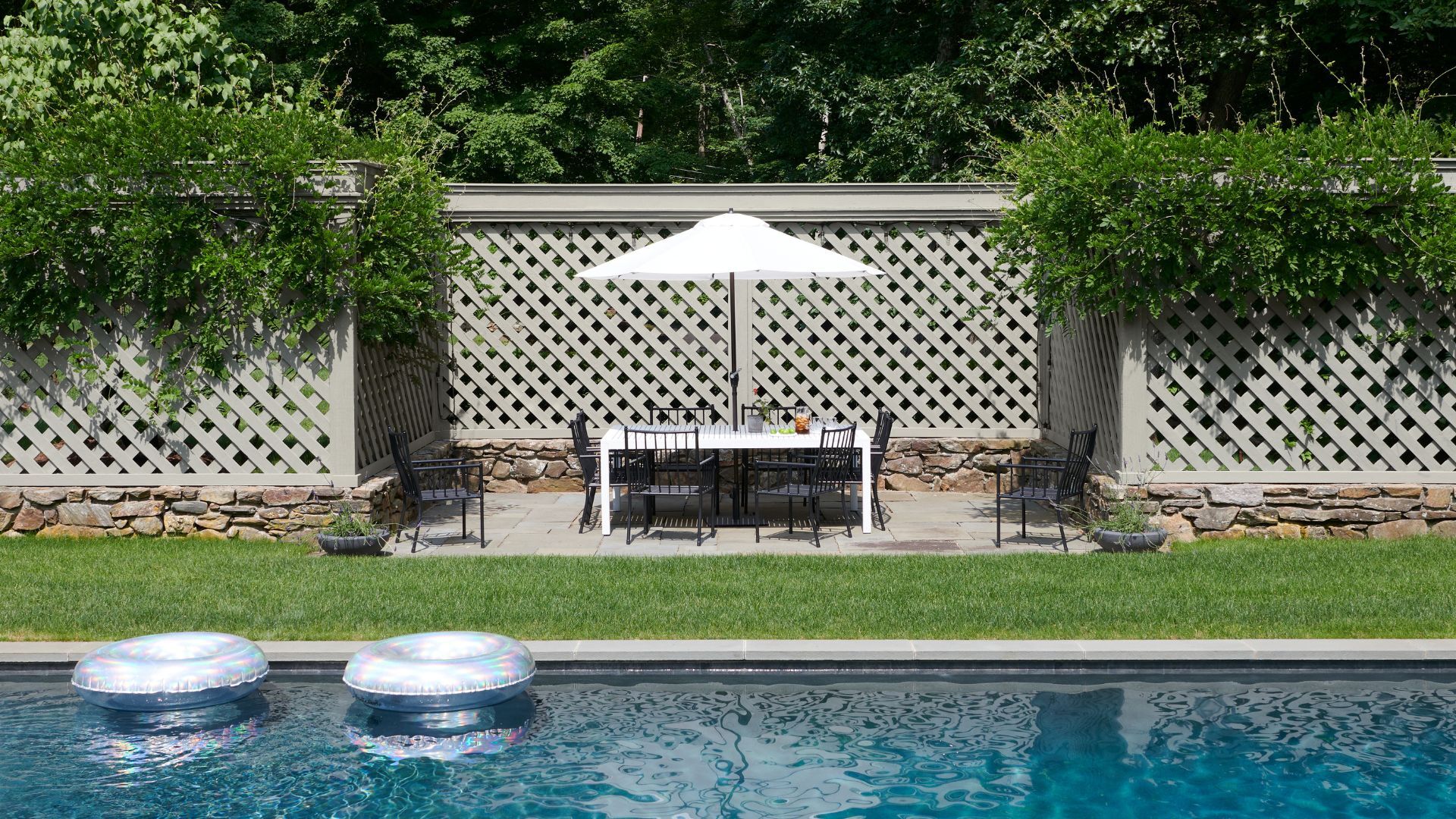
Exterior details are often the last thing we consider when updating our homes, but they can make the biggest difference. While interiors get the attention they deserve, it’s easy to forget that what’s outside counts too. Fencing, in particular, is usually treated as an afterthought. It gets painted out of necessity, not design, usually in the same default color it’s always been.
But a fence isn’t just a boundary; it frames your entire garden and sets the tone for the space. A color that feels dull, dated, or out of place can ruin a beautiful garden design and disrupt the overall aesthetic. The right paint shade, on the other hand, can elevate everything around it.
Along with choosing the best exterior colors for your home, it’s one of the simplest, most impactful changes you can make to your outdoor space – and if an aesthetic refresh doesn't tempt you, the color you choose can even add value to your home.
If you're looking for garden fence ideas that feel fresh, design-conscious and practical, we’ve rounded up eight of the very best colors to add perennial appeal to your home.
The best colors for a garden fence
1. Natural stone
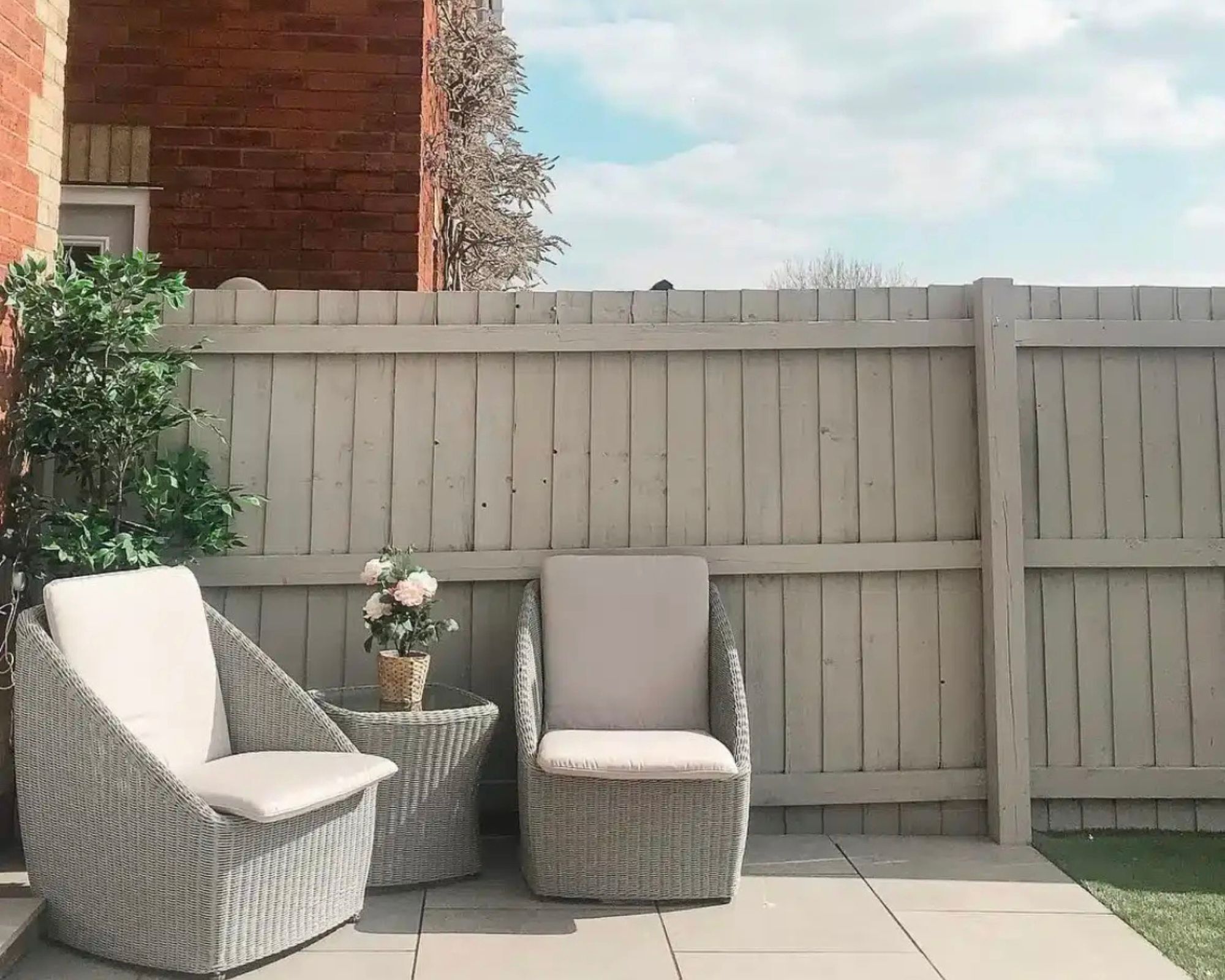
If you are looking for a color to paint your garden fence that will blend seamlessly with the natural surroundings and help make your garden feel more spacious, a great small garden idea is to paint your garden fences a neutral, warm stone color, like London Stone by Farrow & Ball or the paler Simple Stone by Sherwin Williams.
Not only will neutral paint reflect light and make the garden feel more spacious, but it will recede rather than stand out, blurring the boundaries of the garden, making the garden as a whole feel less confined.
‘A soft neutral is a timeless hue that works beautifully on garden fences,’ explains Arianna Barone, Color Marketing Manager at Benjamin Moore. ‘It provides the perfect backdrop for climbing plants, colorful blooms, and flowering vines. Neutral stone colors pair well with a variety of materials like stone and brick to seamlessly blend into your home’s exterior palette.’
2. Almost black
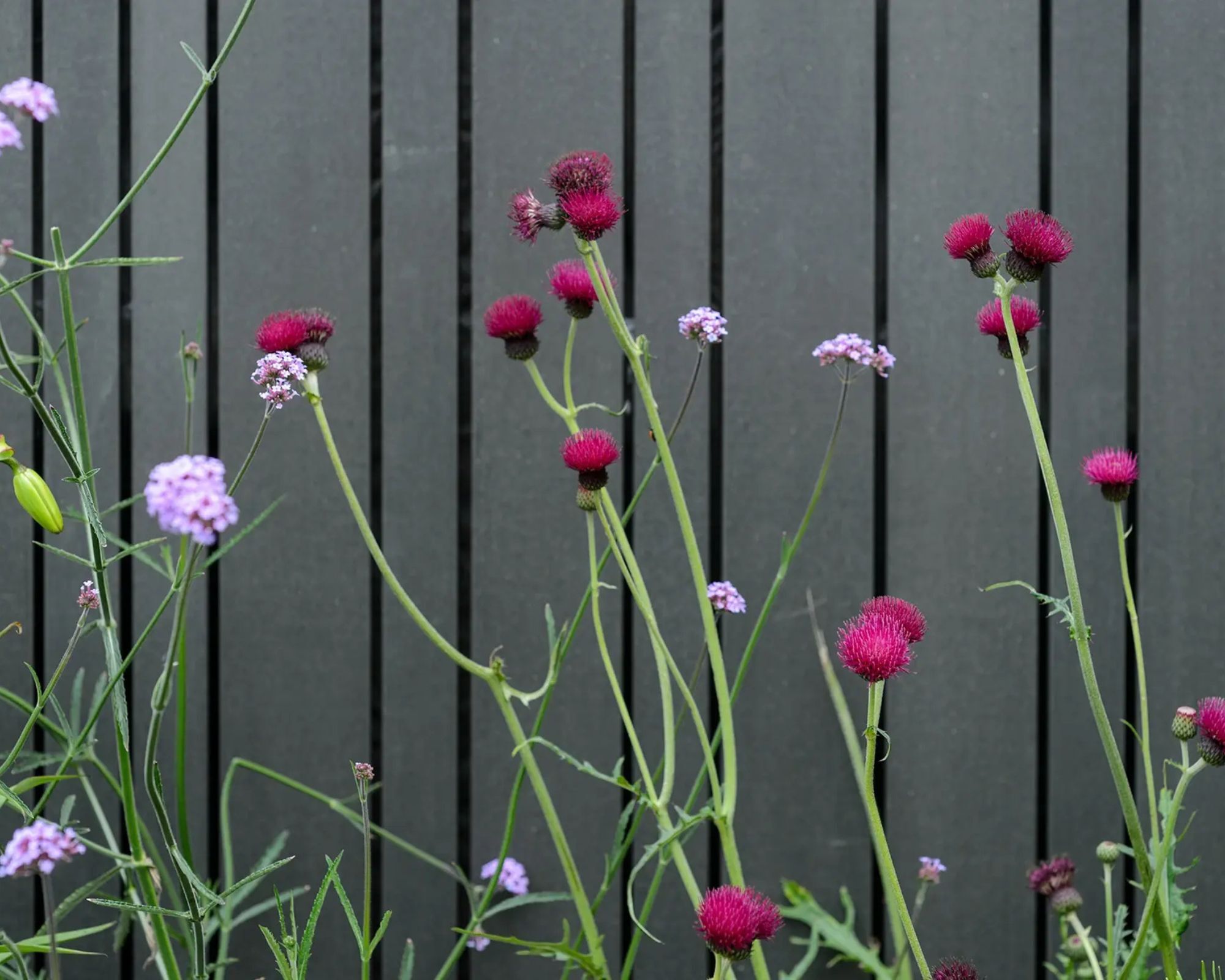
You might think painting your garden fence with black paint is a risky choice, especially since black seems like a color that might make your garden appear smaller.
However, if decorating with black makes you nervous, rest assured, it can work wonders in the garden. Painting your garden fences black, or a variation thereof, a flat charcoal like Railings by Farrow & Ball, or an inky almost-black hue, like Down Pipe by Farrow & Ball, will create a wonderful canvas to showcase planting and make a spectacle of your colorful flowers.
Instead of blending in with their surroundings, plants stand out against the dark surface. If you have a particularly bright border, populated by brightly colored plants and flowers, painting the garden fence behind it black will only exaggerate and enhance the intense colors, making this area of the garden appear even more vibrant and lively.
3. Soft white
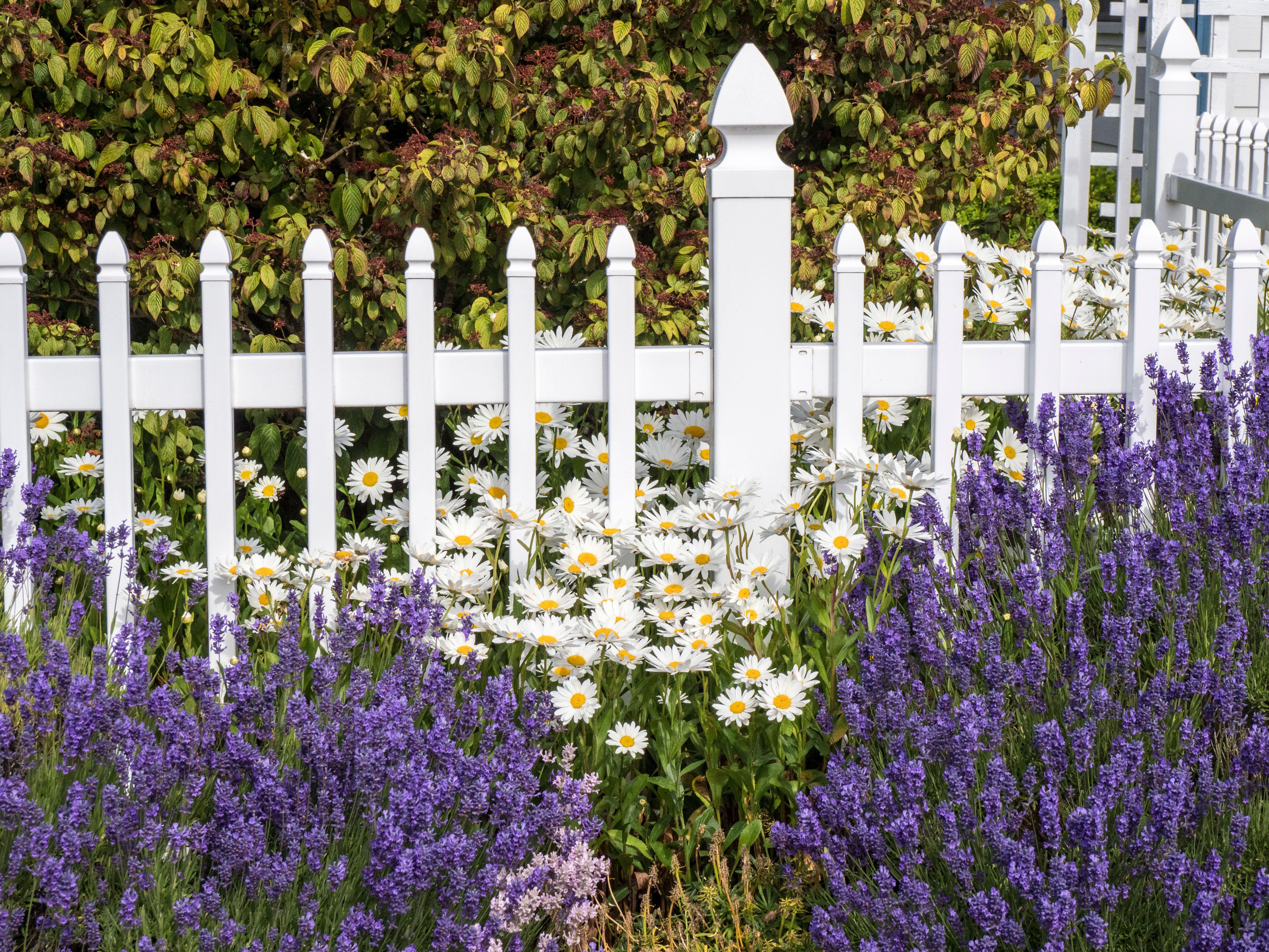
If you dream of recreating Martha Stewart’s garden or perfecting the iconic cottagecore look, then don’t shy away from painting your fences in a soft white. While some white fences may feel a bit twee and chintzy, if strategically placed in the right areas, and with the right white paint, they can be effortlessly chic.
If you are designing a rose garden, there is nothing more charming than white fences and woodwork. In this traditional and somewhat formal setting, painting your garden fences a gentle white brings the garden a strong sense of timeless elegance. If you’re searching for cottage garden ideas, be sure to consider painting your fences white to set the scene.
Bear in mind that the undertones of the white paint you chose are key to getting it right. A blue, cool undertone makes for a dazzling ‘brilliant white’, which can often look quite jarring and clinical, and looks particularly out of place in a garden. Instead, a white paint with a touch of warmth to it will look much more at home in the garden.
‘A beautifully soft white, like Atrium White OC-145, also makes for a beautiful garden fence color,’ explains Arianna. I love it especially on stucco homes for a classic look. The subtle hint of pink provides the ideal complement to lush greenery.’
4. Dark forest green
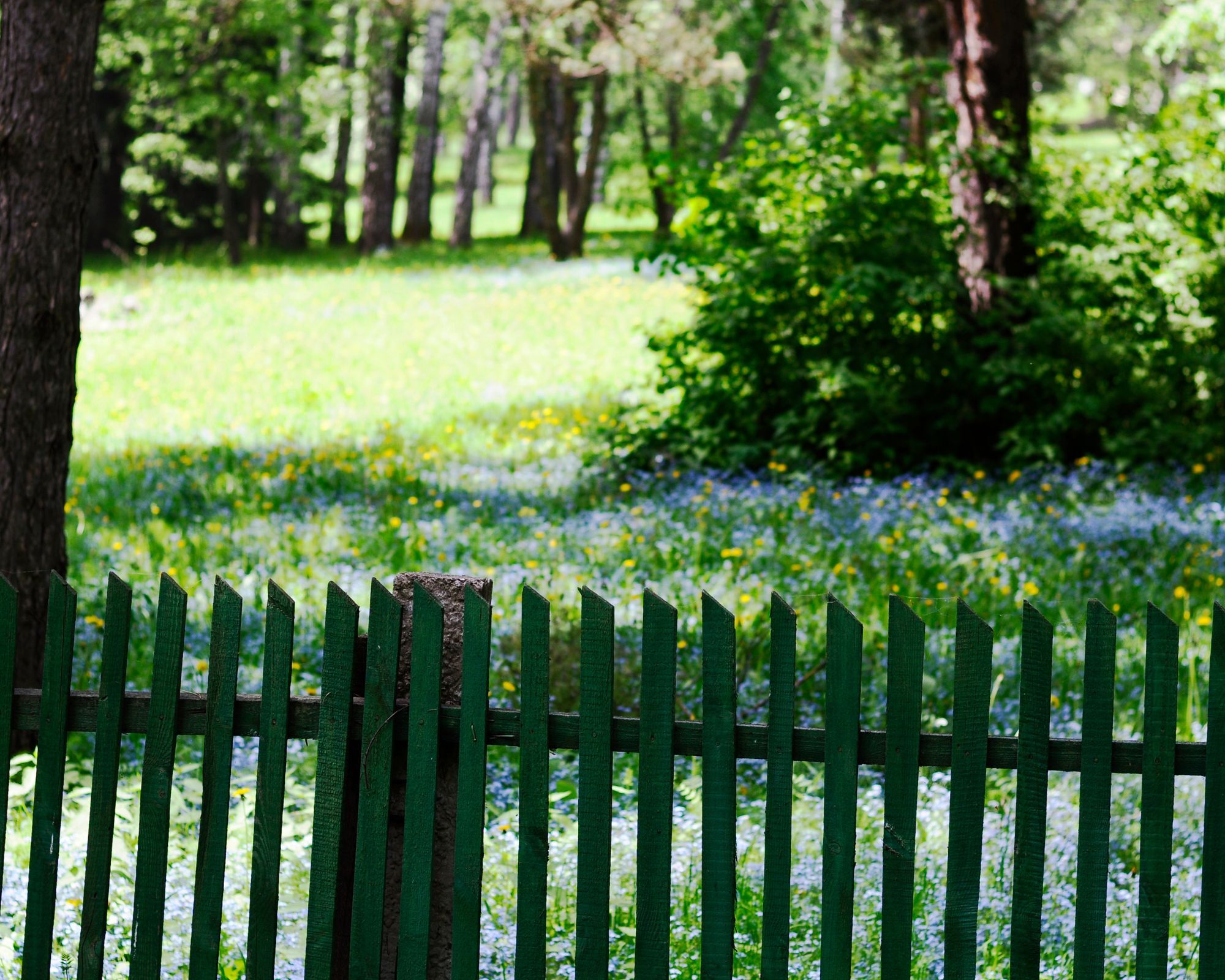
Dark forest green is a strong, stylish choice for garden fences. This nature-inspired shade helps fences recede into the background, allowing greenery to take center stage, while still giving the garden structure and definition.
Using dark forest green paint is also a practical option, as it's less likely to show dirt or weathering, which makes for less frequent redecorating. Shades like Dark Bronze Green by Little Greene or Dard Hunter Green by Sherwin-Williams are ideal choices.
An important consideration when putting all of your garden ideas into action at home is that a garden is not always filled with bright spring foliage and summer blooms, but for many months, it may be home to bare winter branches and bare roots. A very light, bright, or spring-like color on garden fences may complement the planting for some of the year, but then look somewhat startling and out of place at other times.
Deep, forest green, though, performs well across the seasons, almost unnoticeable in the height of summer and then dark and shaded, like a canopy of a mature woodland. As such, this might just be the most versatile color to choose for your garden fence.
5. Soft greys
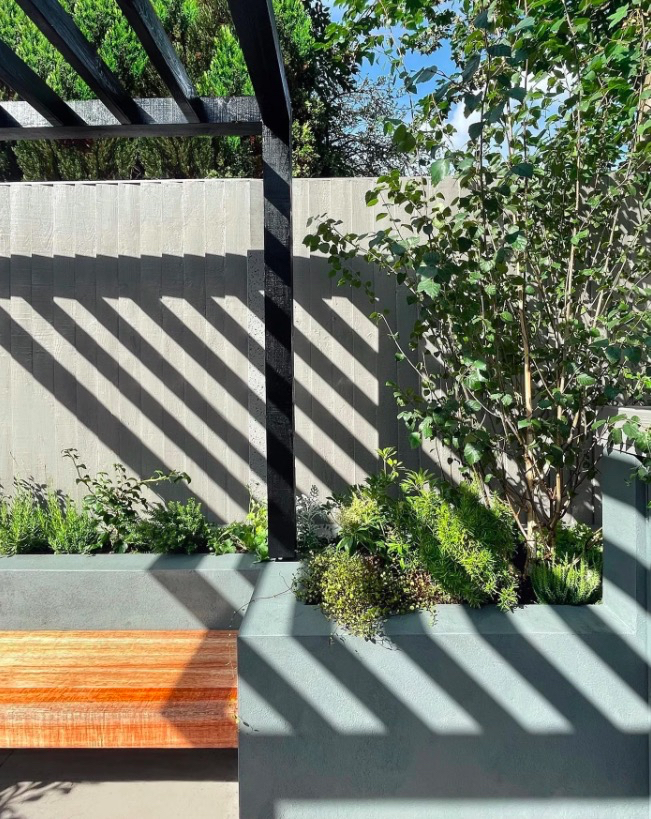
As we have touched upon, darker colors are perfect fence colors for a small garden. Deeper hues are far more likely to blend more effortlessly into the garden and help blur the edges so the space appears larger. They are also great shades for making the greenery in your garden a really focus – black is not the easiest color for our eyes to register, we almost see through it, hence why it's a great color for blurring boundaries and highlighting planting.
Pick a more natural-looking grey, by which we mean soft shades with green or brown undertones, like Charleston Grey by Farrow & Ball. Avoid anything too blue and steely.
'As a less extreme option to black, I use a dark grey in exterior fences, which is an emotional, thought-provoking color that exudes modernity and class. It can look super sophisticated and evoke drama, so it’s perfect for someone who wants to go bold with their design and add contrast as the green of the landscaping will pop,' explains designer Julia Dempster.
6. Rich rusty reds
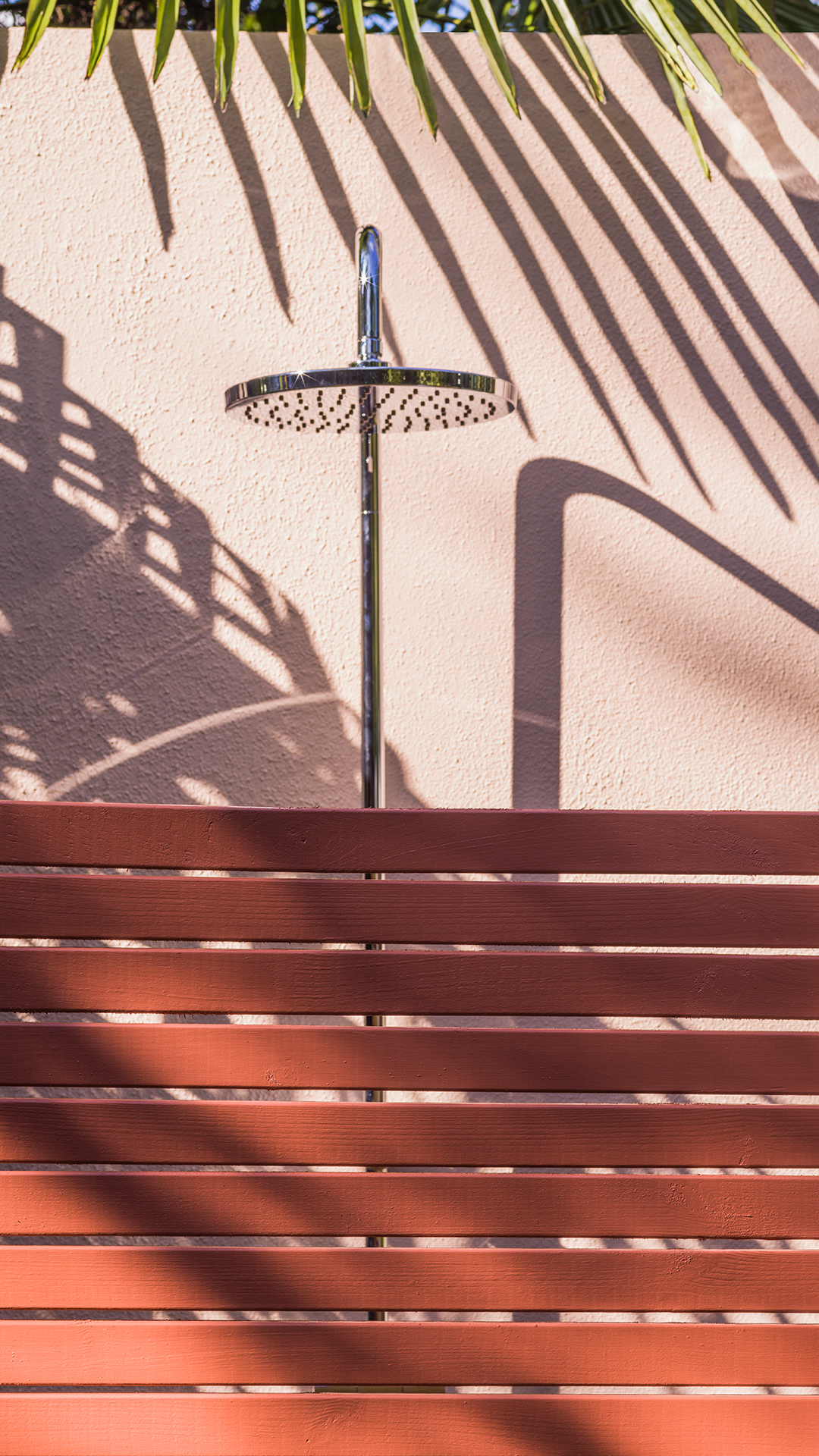
Mediterranean gardens are always apparent in garden trends year after year, we can not get enough of those sunny spaces. A recurring color in these warmer climes is terracotta – weathered pots, plastered walls, tiled floors, you know the vibe. So create that look with your fence color.
Rusty, warm reds create just enough contrast with greenery that you notice it as a backdrop, but due to the very natural shade, it doesn't look stark or out of place. Plus you get that red plaster vibe without having to actually plaster one of your garden walls.
'For something a little more urban, add a splash of equatorial warmth with spice tones – this will lend itself rather beautifully to container gardens. Red Earth in Exterior Eggshell is your friend here and will deliver a warm glow even on the gloomiest of days,' recommends Patrick O'Donnell of Farrow & Ball.
7. Deep natural blues
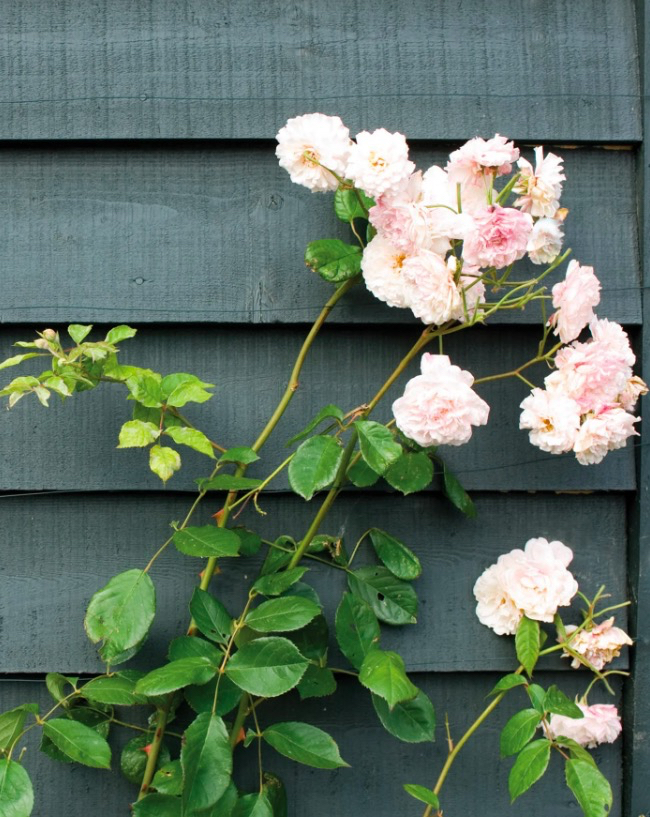
You'll notice a recurring theme here, the best fence colors tend to be on the natural side. Colors that dissolve into the surrounding space rather than dominate focus, and a soft, deep blue is perfect for doing just that. They also have the pre-mentioned benefit of making a small garden look bigger.
'The best way to deal with a rather mundane fence is to paint it dark,' suggests Patrick O'Donnell. 'As well as looking rather smart, it helps it disappear and becomes a very flattering backdrop to planting. Smart options here would be Inchyra Blue, which has an empathetic slither of green through it, to the moodier but rather chic options of Railings or Off Black– all in Exterior Eggshell. Avoid a shiny finish as you want the color to ‘retreat’.'
Helen Shaw of Benjamin Moore agrees that 'Opting for rich, darker shades such as navy blue and forest green, not only add a touch of drama and luxury but on a practical note, show less wear and tear.'
8. Soft subtle greens
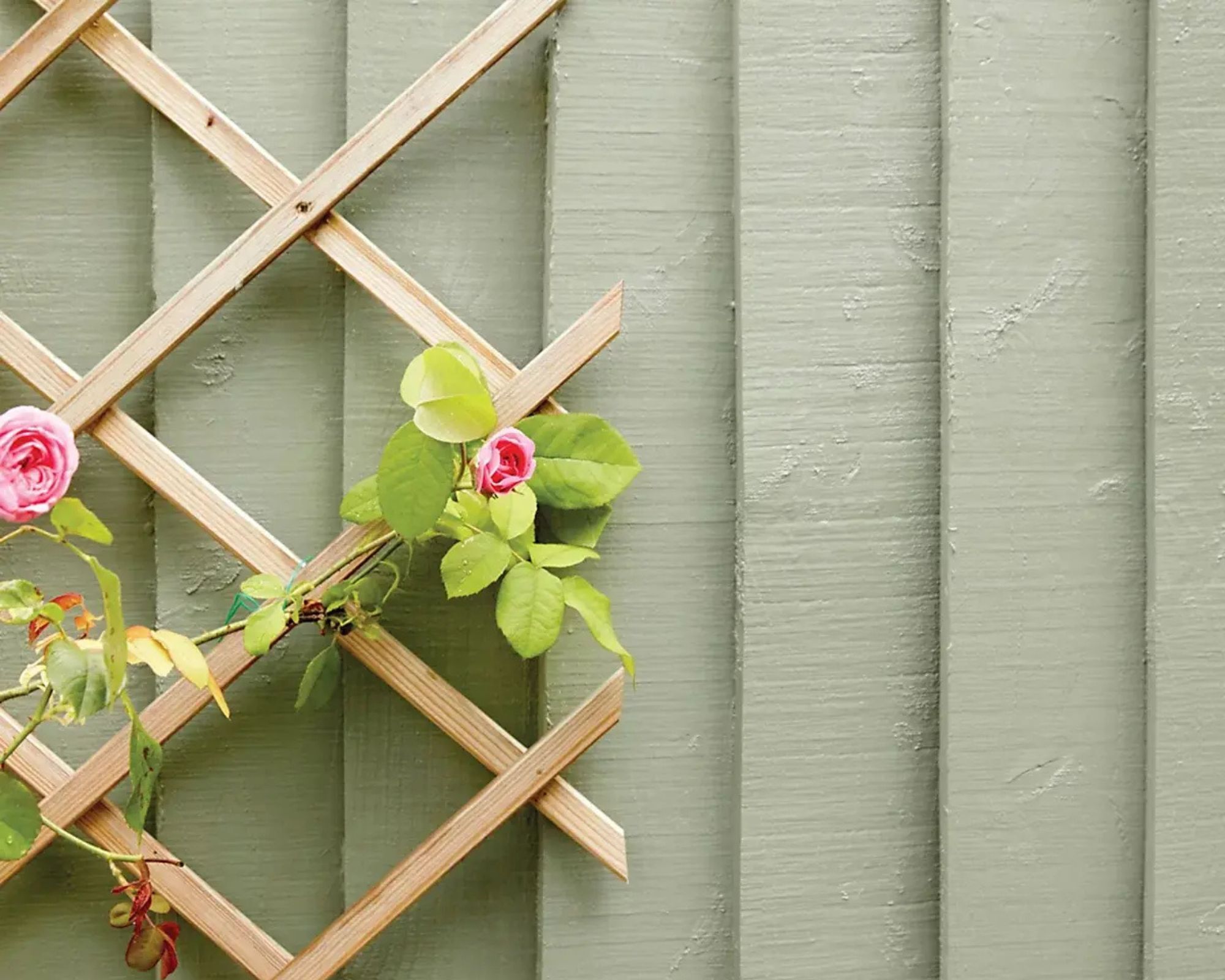
The key to a green fence is picking the right green. The draw of a green fence is that they can so easily blend into foliage, however, if you pick the wrong tone of green, you can get this awful, unnatural clash. So order swatches and find one that complements your planting. We'd recommend going for a soft, subtle sage green that creates a tonal effect with the other greens.
'Painting your fence makes for a practical and decorative way of updating your exterior and picking the right color is key,' says Helen Shaw. 'If you prefer a subtle and chic aesthetic, consider a tonal scheme by drawing from colors apparent in the natural world. Blue and green are examples of such colors that are versatile yet stylish. As the two colors most regularly seen in nature, they require our eyes to do little to no adjusting, which is perfect for creating a feeling of harmony and elegance throughout the space.'
FAQs
What are the worst paint for a garden fence?
Fence colors to avoid are anything that creates a real clash, and colors that you rarely find in nature. Vivid and bright primary colors like yellow and red do risk dominating and being over-stimulating in a place that you probably want to feel calming and serene. Stick with more muted versions of colors – sage greens, soft navy blues, muted reds, and butter yellows.
What fence color makes a garden look brighter?
Pale, pastel hues are perfect colors for making a garden look brighter. Skip the more saccharine hues like pink and lilac, but instead try out soft sky blues and really pale sage greens. These shades are natural enough to be at home in a garden but will give a space a lift. Of course, white in the right space can brighten a garden too, and soft neutral tones like sand, taupe, and off-whites.
From grounding greens to chic charcoals, each paint shade contributed to the mood, style, and sense of space in your garden. The wrong color can clash with your planting and architecture; the right one will frame it beautifully.
Incorporating thoughtful color into your fence isn't just about aesthetics; it brings cohesion, contrast, and character to your outdoor space, all while enhancing its curb appeal.
As far as the best ways to add value to your home go, a well-considered garden, down to the very last panel, is a smart place to start.







